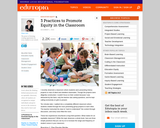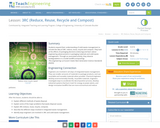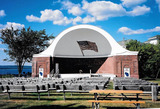
This is a modified version of the SCRIPT training slides from 2021-22 that is designed for facilitation over three 2-hour virtual sessions.
- Subject:
- Computer Science
- Education
- Material Type:
- Other
- Author:
- CESA 11
- Date Added:
- 06/17/2022

This is a modified version of the SCRIPT training slides from 2021-22 that is designed for facilitation over three 2-hour virtual sessions.

Learn about the thinking behind three equitable practices in classroom where all students are recognized as unique individuals, have equity in voice, and given access to the resources they need to learn.

In this lesson, students expand their understanding of solid waste management to include the idea of 3RC (reduce, reuse, recycle and compost). They will look at the effects of packaging decisions (reducing) and learn about engineering advancements in packaging materials and solid waste management. Also, they will observe biodegradation in a model landfill (composting).

Many startup crises can be averted by seeking expert guidance in the planning stages, long before leases are signed or business cards are printed. Like a savvy career counselor or financial planner, the right advisor can help you build a solid foundation as well as steer you through choppy waters once you open your doors.

This is our three year plan for implementing the Units of Study for Writing. This allows us to plan for professional development and gives us the direction we need as we continue to move forward.

This task helps children explore multidigit computation with arrays and/or repeated addition.

Overview: Students will review how to use Google Docs and type their final draft. Students will also learn how to insert a picture into a Google Document to support their opinion. In addition, students will share their writing using an author’s chair. Student writing will then be hung in the hallway.W.3.1: Write opinion pieces on topics or texts, supporting a point of view with reasons. I can write an opinion piece and support my opinion with reasons.

Overview: Students will begin to explore opinion pieces by reviewing the difference between a fact and opinion.Building Into W.3.1: Write opinion pieces on topics or texts, supporting a point of view with reasons.Building Into: I can write opinion pieces and support my opinion with reasons.

Overview: Students will brainstorm and then choose a topic for their opinion paper. Students will then brainstorm a list of reasons that support their topic.Building Into W.3.1: Write opinion pieces on topics or texts, supporting a point of view with reasons. (I can write opinion pieces and support my opinion with reasons.)W.3.1b: Provide reasons that support the opinion. (I can provide reasons that support the opinion.)

Overview: Students will craft a strong opinion using the topic they chose on Day 2, the list of reasons they brainstormed on Day 2, and the stoplight model.W.3.1: Write opinion pieces on topics or texts, supporting a point of view with reasons. (I can write an opinion piece and support my opinion with reasons.)W.3.1a: Introduce the topic or text they are writing about, state an opinion, and create an organizational structure that lists reasons. (I can introduce a topic by stating an opinion and using an organizational structure to list reasons.)

Overview: Students will use the OREO strategy to outline their opinion paper. Outlines will include the students opinion statement, 3 reasons, and an example or detail for each reason.W.3.1: Write opinion pieces on topics or texts, supporting a point of view with reasons. (I can write an opinion and support my opinion with reasons.)W.3.1b: Provide reasons that support the opinion. (I can provide reasons tht support my opinion.)

Overview: Students will write the introduction to their opinion paper. Students will choose a strategy to hook their reader and then rewrite their opinion statement as their introduction statement.W.3.1: Write opinion pieces on topics or texts, supporting a point of view with reasons. (I can write an opinion piece and support my opinion with reasons.)W.3.1a: Introduce the topic or text they are writing about, state an opinion, and create an organizational structure that lists reasons. (I can introduce a topic by stating an opinion and suing and organizational structure to list reasons.)

Overview: Students will write the body of their rough draft following their OREO prewriting page and transition words and phrases.W.3.1: Write opinion pieces on topics or texts, supporting a point of view with reasons. I can write opinion pieces and support my opinion with reasons.W.3.1b: Provide reasons that support the opinion. I can provide reasons that support the opinion.W.3.1c: Use linking words and phrases (eg. because, therefore, since, for example) to connect opinion and reason. I can use linking words and phrases to connect opinions and reasons.

Overview: Students will finish drafting their rough drafts by adding a concluding statement.W.3.1: Write opinion pieces on topics or texts, supporting a point of view with reasons. I can write opinion pieces and support my opinion with reasons.W.3.1d: Provide a concluding statement or section. I can provide a concluding statement

Overview: Students will use COPS and the focused edit strategy to practice editing and then edit their opinion paper.W.3.1: Write opinion pieces on topics or texts, supporting a point of view with reasons. I can write opinion pieces and support my opinion with reasons.W.3.5: With guidance and support from peers and adults, develop and strengthen writing as needed by planning, revising, and editing. (Editing for conventions should demonstrate command of Language standards 1-3 up to and including grade 3 here.) I can develop and strenghten my writing by planning, revising, and editing with the help of my peers and an adult.

Overview: Students will use a focused revising choice board to guide peer writing conferences. The teacher and students will use a focused revising choice board to guide teacher writing conferences.W.3.1: Write opinion pieces on topics or texts, supporting a point of view with reasons. I can write an opinion piece and support my opinion with reasons.W.3.5: With guidance and support from peers and adults, develop and strengthen writing as needed by planning, revising, and editing. (Editing for conventions should demonstrate command of Language standards 1-3 up to and including grade 3 here.) I can develop and strengthen my writing by planning, revising, and editing with the help of my peers and an adult.

This is the outline for a third grade writing unit on writing opinion (persuasive) papers. The lessons and materials are linked to the outline, but they also uploaded in a PDF format as sperate lessons in WISELearn.

View full lesson: http://ed.ted.com/lessons/3-tips-to-boost-your-confidence-ted-edMade in partnership with the Always #LikeAGirl campaign.When faced with a b...

The 1920s was a decade of increasing conveniences for the middle class. New products made household chores easier and led to more leisure time. Products previously too expensive became affordable. New forms of financing allowed every family to spend beyond their current means. Advertising capitalized on people's hopes and fears to sell more and more goods.

Principal Matt Renwick, principal and author, works with the art teacher and grade 5 teacher to utilize portfolio assessment in classrooms. The teachers are incorporating digital portfolio assessment as a way to better gauge student progress and success for more subjective areas of study, such as literacy and art. Read more about these practices in the module.